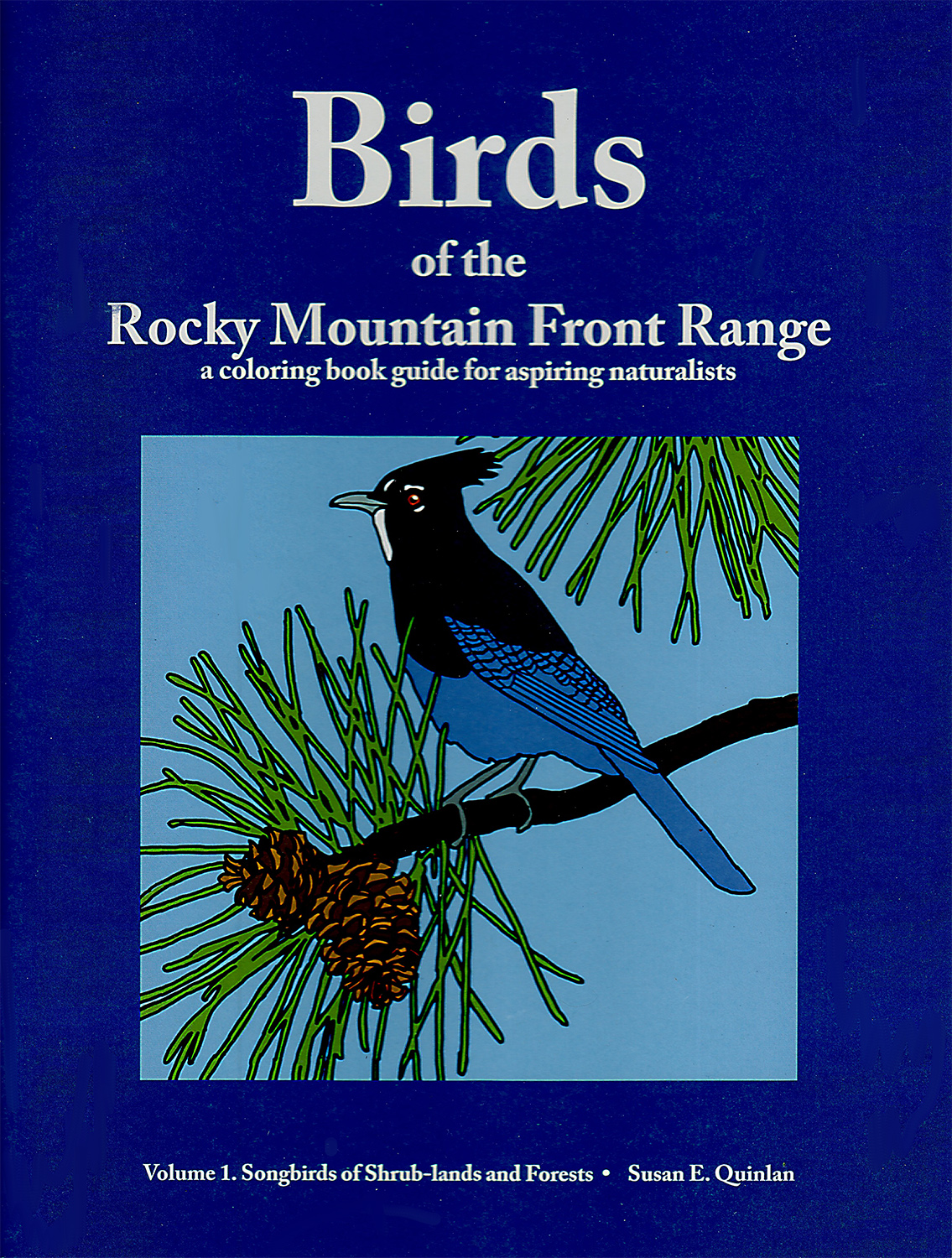
15% Discount on books, cards, and art from my online store.
No worries!! I'll only send occasional updates. And I promise to never share your email address with anyone for any reason.

No worries!! I'll only send occasional updates. And I promise to never share your email address with anyone for any reason.
As winter continues to deliver cold and snow, the seed company catalogs are arriving to tempt me with thoughts of spring and getting back outdoors to the joys of naturescaping as I call my efforts to make my yard more attractive to birds, bees, butterflies, and other wildlife.
The catalogs I am already receiving feature the vibrant colors of spring and summer. These grab my attention and set me dreaming about my summer yard. But naturescaping involves making my land beautiful and enticing to me and wildlife, year-round.
The catalogs don’t provide much information about what those brilliantly blooming plants look like in winter. And that is a feature I now consider when choosing what I will add to my landscape in the planting season ahead.
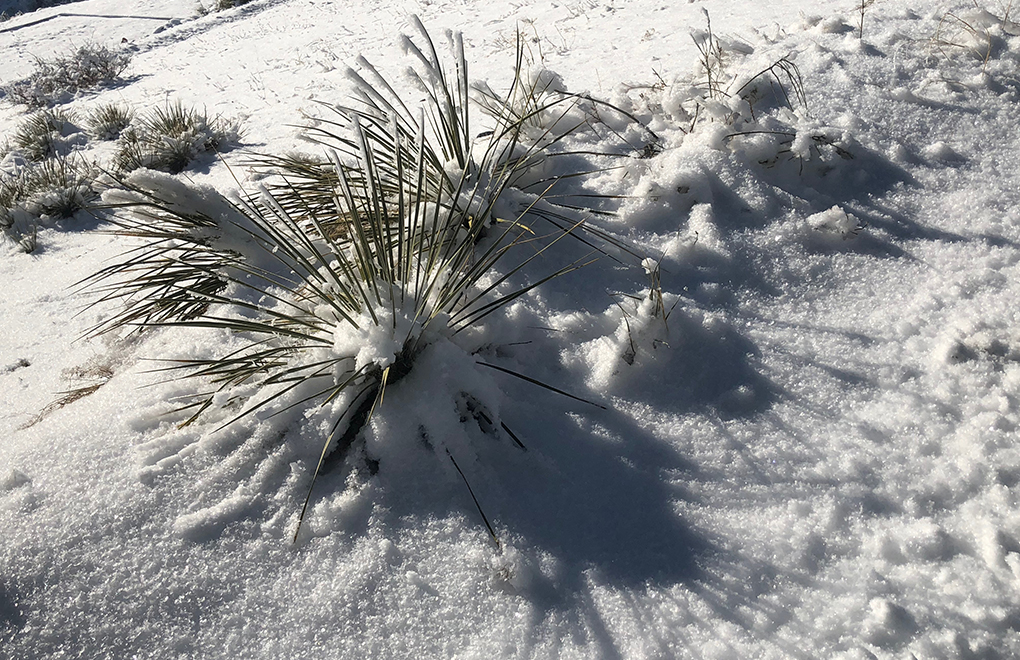
Yucca stays green in winter. Its form and shadows lend interest and beauty to the winter scenes in my yard. (Yucca glauca)
A few years I go, I started wandering around my land and nearby natural areas in winter to take note of the plants that help create a winter landscape full of textures, varied color, and beauty.
The native plants I show below are ones I think bring interest and beauty to my winter yard. I live at about 6000 feet elevation along the northern Front Range of Colorado. While some of the same species might be native where you live, many of my selections won’t be the right choices for anyone living elsewhere.
But I hope my photos and thoughts will encourage you to think about what native plants bring beauty to your neck of the planet, in winter, or in your dry season if you happen to live somewhere without a winter.
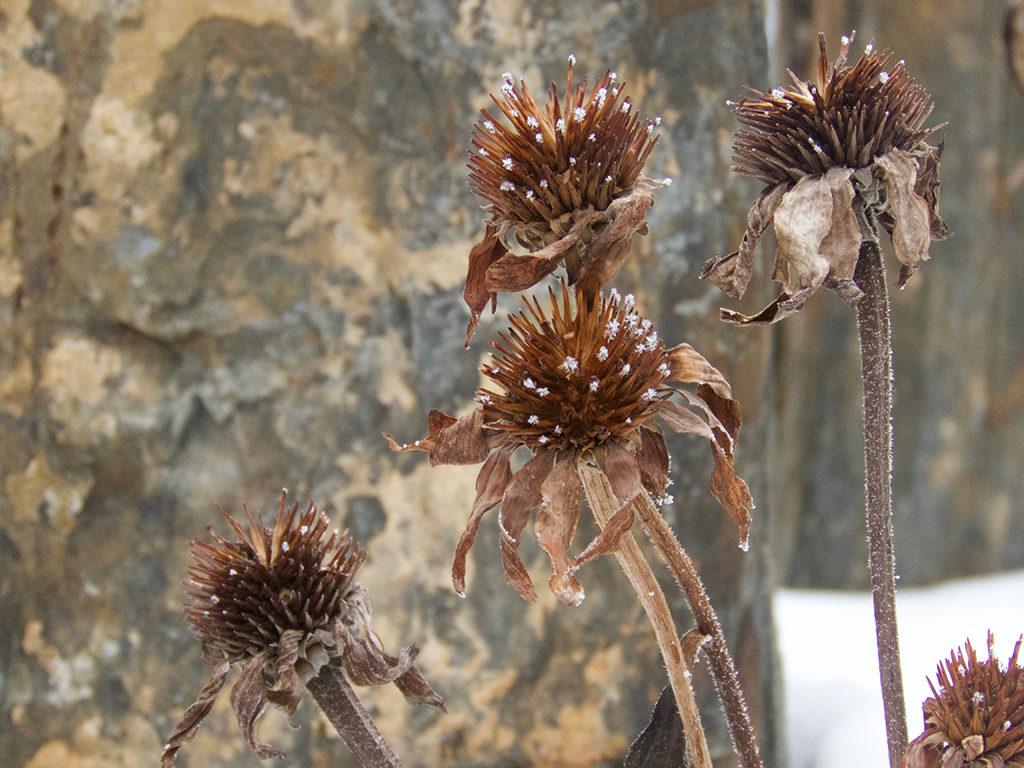
Echinacea seed heads are not only pretty in winter, they also attract goldfinches and other seed-eating birds.
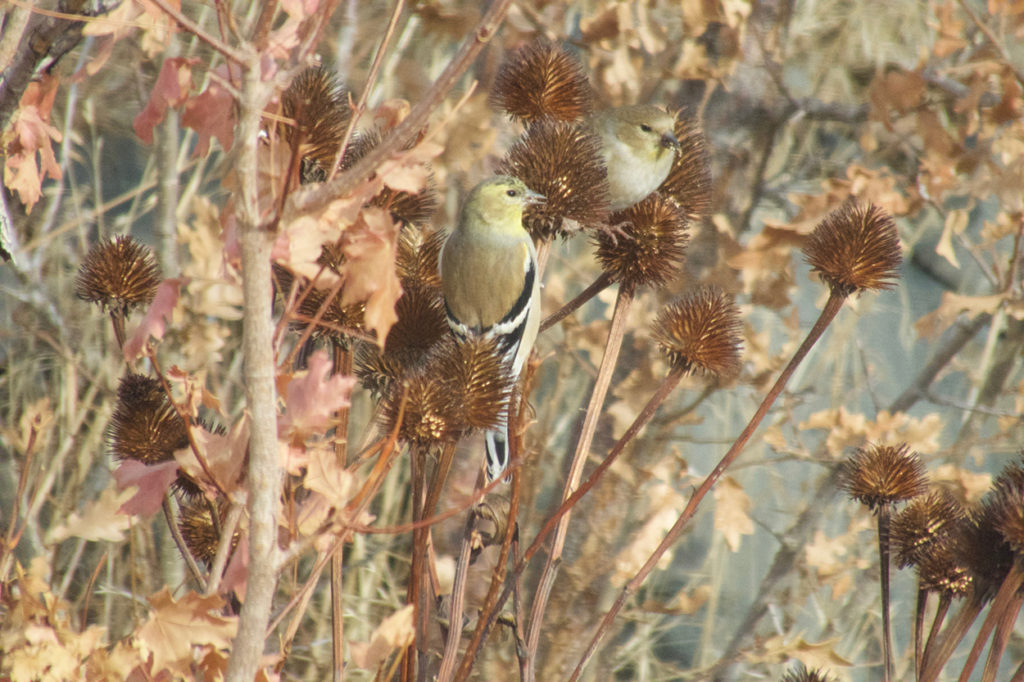
Goldfinches feeding on Echinacea seed heads. February.
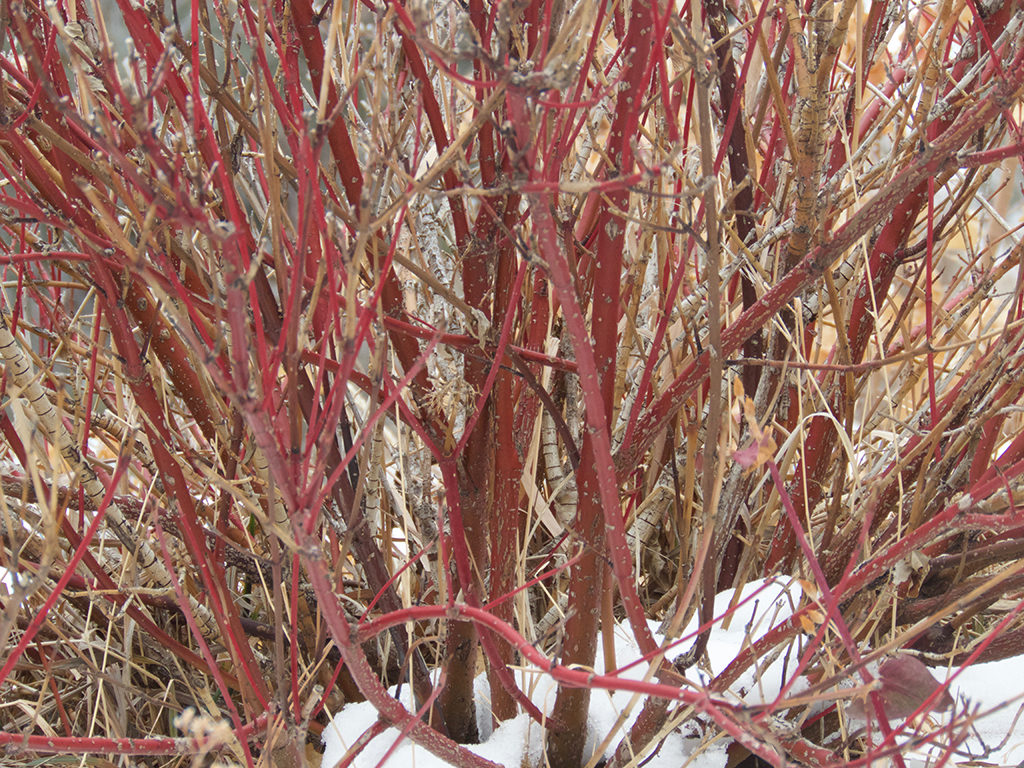
The stems of Red-osier Dogwood (Cornus sericea) add a rich red color to winter.
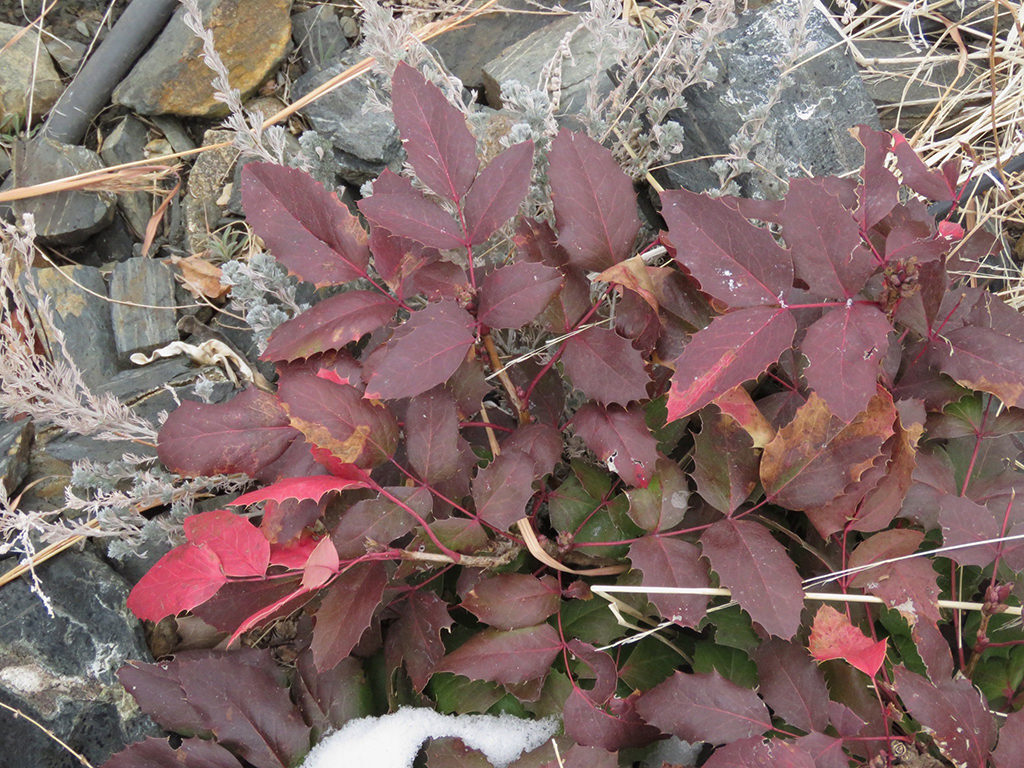
Creeping Barberry (Mahonia repens) turns red in fall. Some of these plants growing on my land remain red through most of winter, while others turn green up in late winter. Either way, they bring color to my winter landscape.
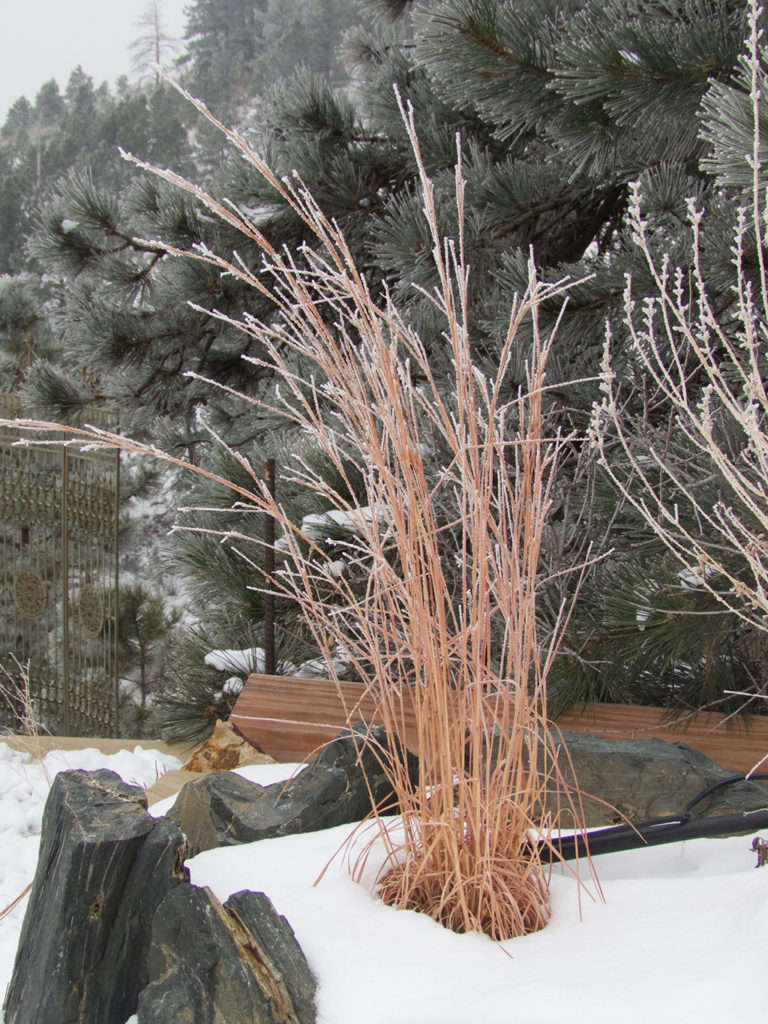
Little Bluestem grass (Schizachyrium scoparium) seems mis-named as its beautiful red stems brighten fall and winter.
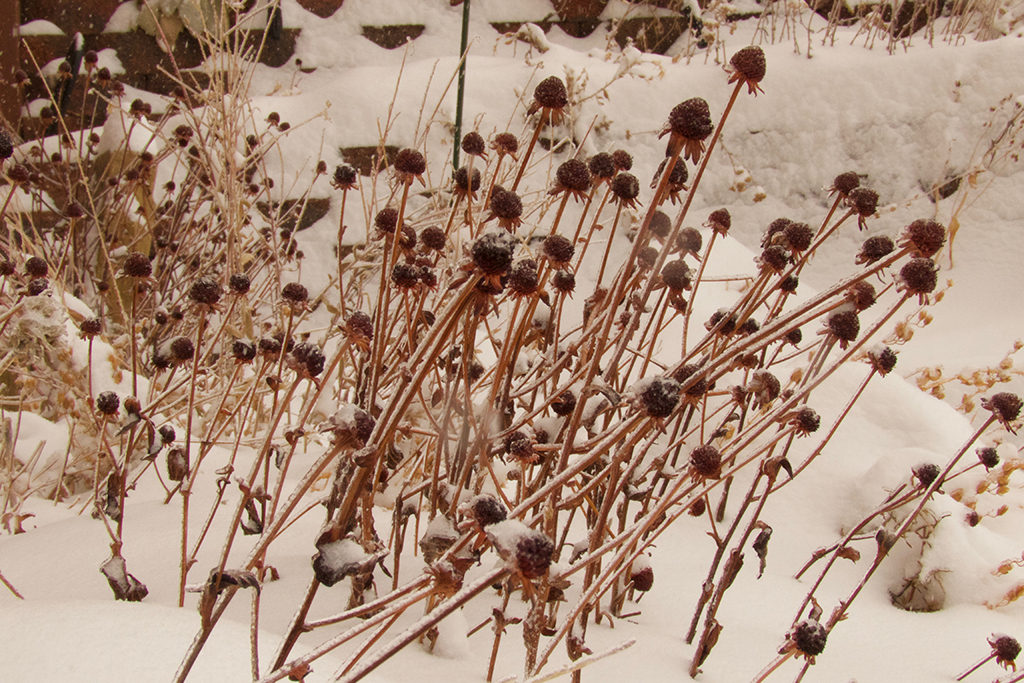
The beautiful dark red flower heads of Black-eyed Susans (Rudbeckia hirta) stand out in contrast against the snow.
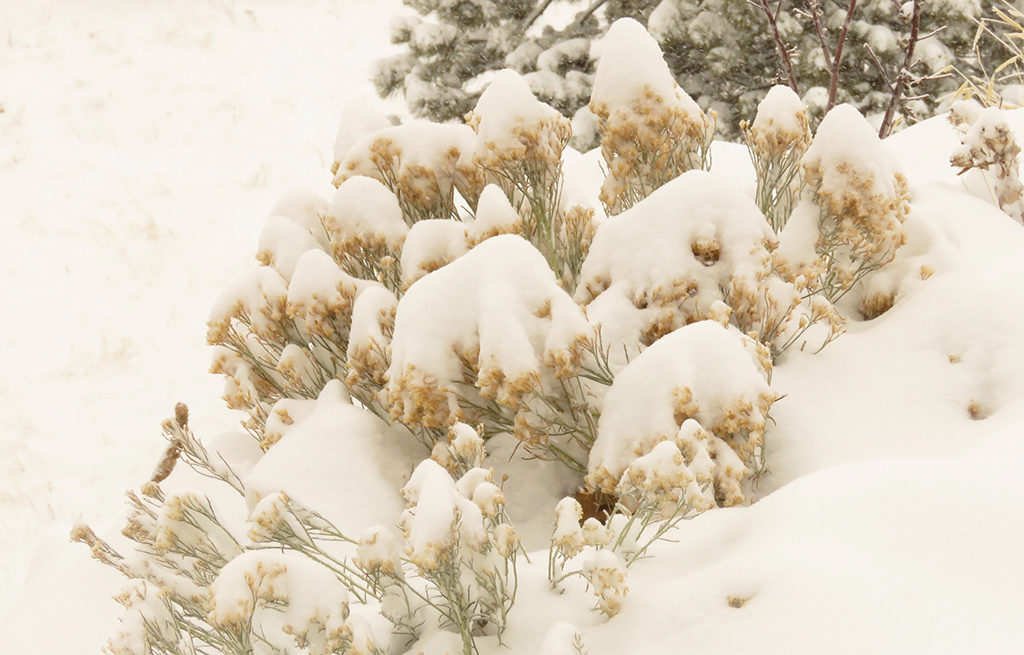
Rabbitbrush (Ericameria nauseosa) stems remain light green through winter. The bright yellow flower clusters of fall dry and turn golden for the winter.
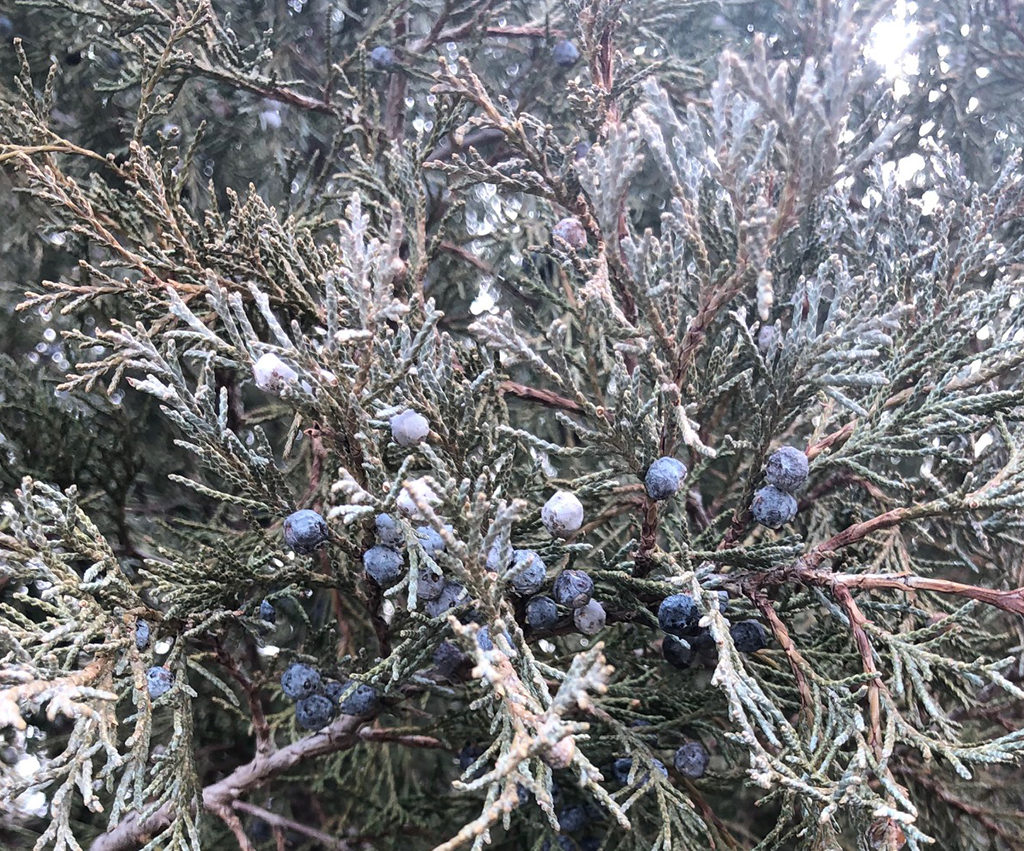
Juniper (Juniperus scopularum) remains green and retains its blue berries all through winter. It provides shelter from the cold and wind for a variety of birds, including juncos, sparrows, and chickadees. Townsend’s Solitaires seem to particularly relish the blue berries of junipers, which in my mind is reason enough to add a few juniper tress to my yard.
If you are already landscaping with native plants, first check out which of the plants you planted previously that best enrich your winter views. Possibly you will want to plant more of those in the coming growing season.
If you haven’t yet started down the delightful and challenging path of native plant landscaping, don’t wait til spring to start thinking about what you could plant. Get outdoors now to discover what native plants might be good choices for your winter yard.
Visit a local natural area and take photos of local plants that create winter beauty in those wild places. A naturalist will be able to help you identify what species you photographed—then you will just need to find a source for the plants’ seeds or starts.
If you live somewhere near a botanical garden, call them up and ask if they have a native plant garden at their site. (If they don’t, just asking about it might give them something to think about.) If, like the Denver Botanical Garden, they already do, take time to wander through their example native plant garden and take pictures of the plants that you would like to have shaping your future winter garden.
The information you collect now will help you plan your next gardening season and landscape your land for year-round beauty.